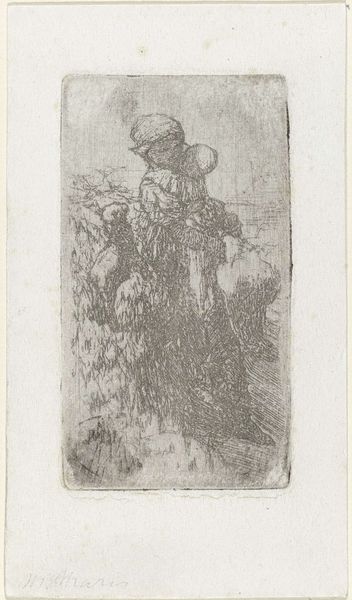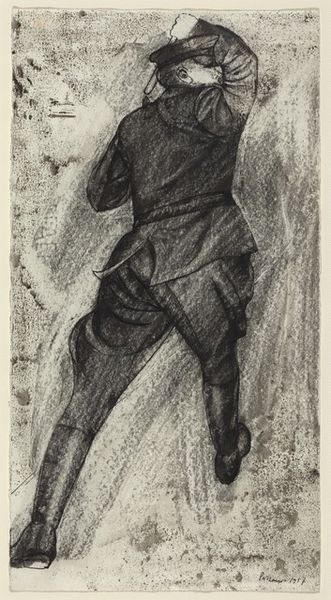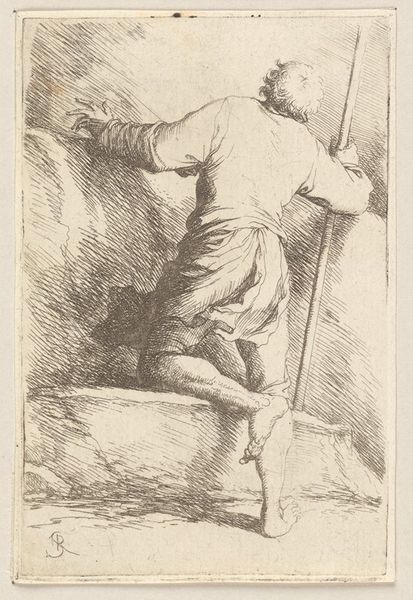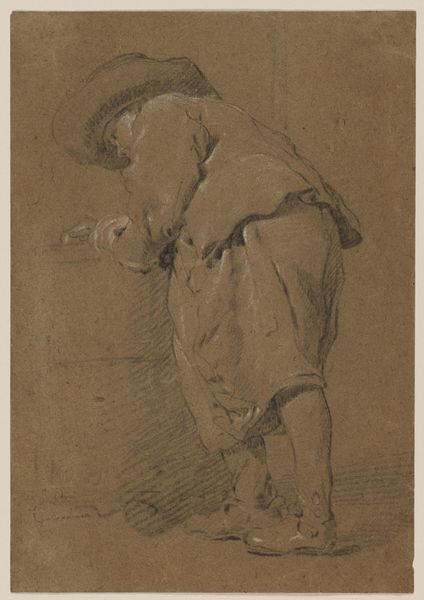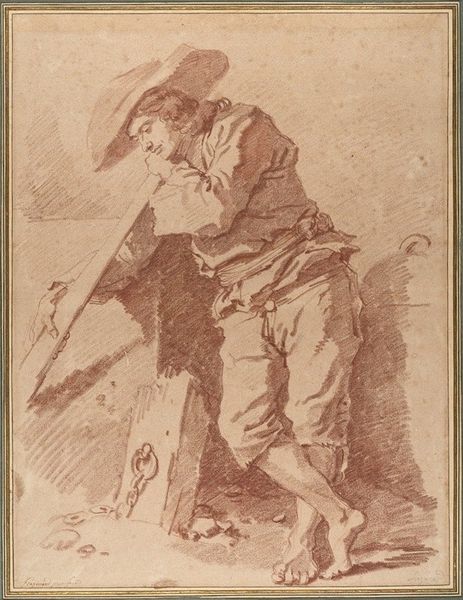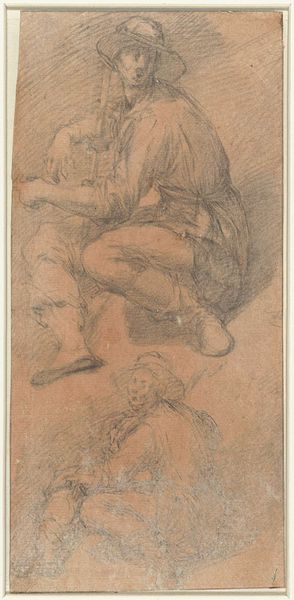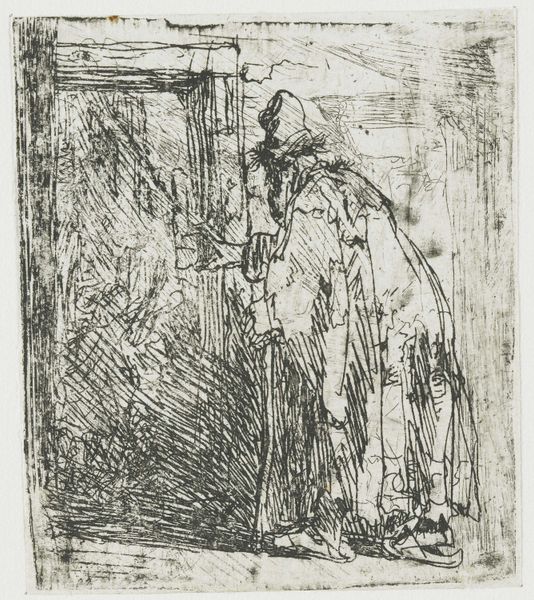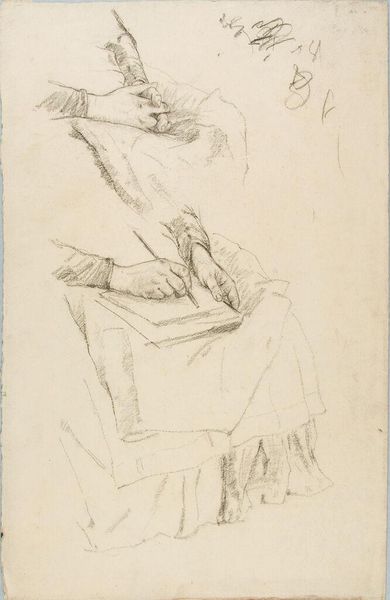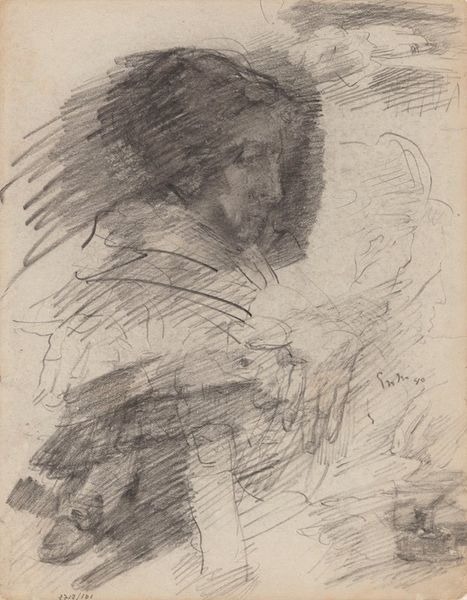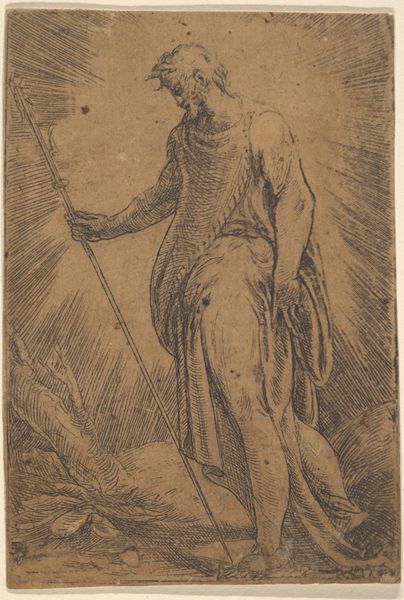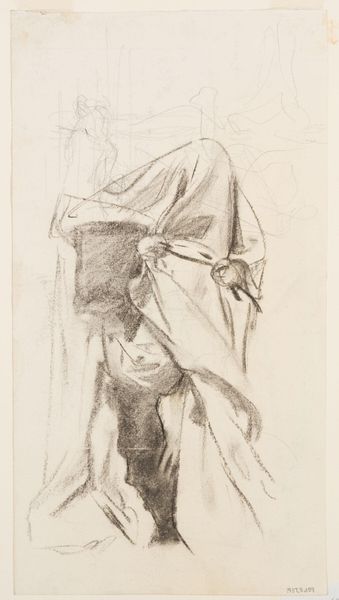
drawing, print, etching
#
portrait
#
drawing
# print
#
etching
#
figuration
#
pencil drawing
#
line
#
history-painting
#
realism
Dimensions: plate: 57 x 41 mm sheet: 143 x 109 mm
Copyright: National Gallery of Art: CC0 1.0
Curator: I'm struck by the rough, almost frantic energy of this piece. The lines are so dense and overlapping. Editor: This is "As Tom Goes Marching to War," an etching by Minna Citron from 1943. Citron was deeply engaged in social and political issues, and much of her work reflected her observations and critiques of the time. This work was done during the heat of the second world war. Curator: An etching... It certainly has the feel of something quickly rendered, urgent even. Is that the artist expressing a sentiment of anxiety about a soldier going off to war? It almost feels expressionistic in its raw portrayal. Editor: It's likely a reflection of the public sentiment in America at that time. What makes this piece interesting is how Citron uses a printmaking technique traditionally associated with a level of removal and replication for a very personal and immediate expression. Her engagement was not as an objective witness but a fellow citizen reacting against the unfolding war and perhaps how the social apparatus and political machinery of the US affects an ordinary guy. The artist might have known a "Tom". Curator: I wonder about the process of etching, and her choice of it. All those tiny lines, built up through labor-intensive techniques of scratching and biting, seem to mirror the destructive energy of war, but also perhaps the unseen labor necessary to wage it. Look at the size of Tom's rucksack too: a giant sack of support by his nation’s public policies? Editor: Interesting thought. It also speaks to how images of soldiers are manufactured, disseminated, and consumed. Think about how much the visual propaganda machine was crucial during World War II for promoting solidarity at home as much as demoralization of the enemies abroad. What’s inside Tom’s sack can symbolize anything to people, even the “invisible support." Curator: Right. Art during wartime becomes not just documentation but a site of ideological struggle. Seeing the material and production side of the images and even their consumption allows to see all that are at stake, even today. Editor: Indeed, reflecting on Citron's method alongside the themes makes us look anew at familiar images of warfare. Thanks. Curator: Absolutely, a reminder that every mark and medium holds within it stories of labor, loss, and lasting questions.
Comments
No comments
Be the first to comment and join the conversation on the ultimate creative platform.
